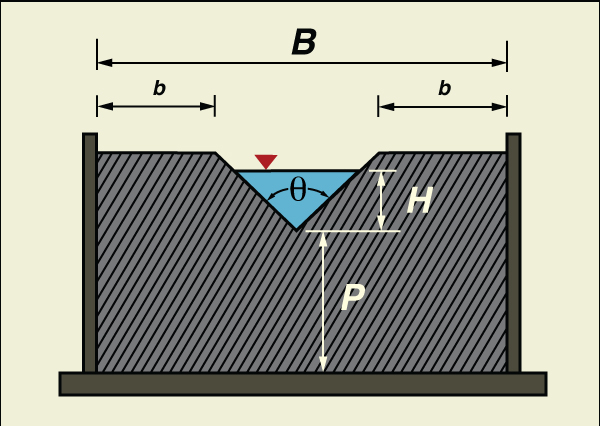The V-notch weir
Today we are going to demonstrate
the V-notch weir.
...
The width of the flume is 6 inches, or 0.5 ft. [Point to the channel width].
...
We turn on the pump.
....
We set the bed slope equal to 1% and check the level [Point to the level].
...
We set the point gage at zero at the weir crotch [Point to the gage].
...
Now we are going to measure the hydraulic head H over the weir.
...
The head measurement should be taken at a distance L of at least 4 times the hydraulic head H.
...
We try a distance of 150 mm.
...
The measured hydraulic head is H = X mm, which is less than 1/4 of 150 mm.
...
In U.S. Customary units, the hydraulic head is H = Y ft.
...
The ratio of head to width H/B is equal to Y/0.5 = YYY, which is less than 0.2.
...
Therefore, the weir is operating under fully contracted conditions.
The discharge through the V-notch weir is:
The discharge coefficient Ce is a function of the angle θ of the weir.
...
In this case, for θ = 90°, the discharge coefficient Ce is 0.578.
...
The head correction k is also a function of the angle θ of the weir [Point to the angle of the weir].
...
In this case, for θ = 90°, the head correction k is 0.0029.
Therefore, the discharge is YY cfs.
The calculation can be performed using the online calculator http://ponce.sdsu.edu/onlineveenotch.php
Q = 4.28 Ce tan(θ/2) (H + k)5/2
Q = 4.28 Ce tan(θ/2) (Y + k)5/2
Q = 4.28 × 0.578 × 1 × (Y + 0.0029)5/2
Q = YY cfs
